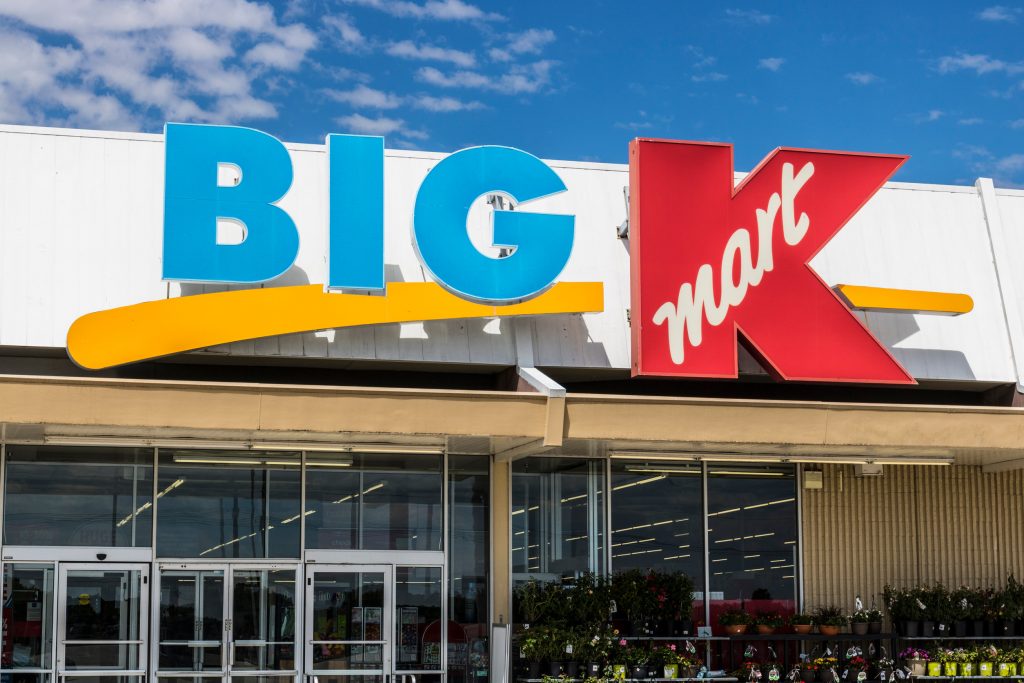Many of us may remember a time when department stores were all the rage. While a few may have withstood the tests of time, other stores, such as Kmart, did not fare so well. At the time of writing this, there are only three Kmart stores left operating in the US. A far cry from its heyday, when it felt as if you couldn’t throw a stone without hitting a Kmart. What happened? Why was its life cut down in such an abrupt way?
The Rise of Kmart
Let’s have a brief history lesson! The Kmart corporation had humble beginnings, as many department stores do. The founder, named S.S. Kresge, opened his first five and dime store in downtown Detroit, circa 1899. Charging only five to ten cents for goods appealed to shoppers, which allowed him to greatly expand his store. By 1912, Kresge was able to open 85 stores nationwide, with sales accruing more than $85 million. Despite war, famine, and economic collapse hitting the US, the store stayed open, offering families prices they could afford. Their motivation was simple: provide what customers need at a price they can afford. In 1937, S.S. Kresge and his company opened the nation’s first suburban shopping center in Kansas City, Missouri.
By 1959, Harry B. Cunningham, the president of the Kresge company, made some major changes to the company. In 1962, he opened the first Kmart Department Store, whose aim was to deliver a reliable source of cheaply priced, but quality items. This concept has now become a familiar staple of our daily lives (we’re looking at you, Wal-Mart), but at the time, it had a revolutionary impact on the face of regular retail commerce. This starting year is important to keep in mind.
The Fall of Many Kmart Locations
By the 1980’s, Kmart had expanded to roughly 2000 individual locations, making it the primary face of the retail world. Zellers–a name most reading this might have to Google–had been beat. The late ‘80’s was, however, the start of the franchise’s decline. Remember that starting year we mentioned to keep in mind earlier? Well, by this point, many locations were coming up on the 30 year mark. Many were run down and out-dated, dealing with poor structural problems and simply unattractive designs. It was also around this point that the Kresge Company had started to venture out. Acquisitions in The Sports Authority, Borders Book Stores, and percentages of Office Max had made it so that their debut retail store Kmart was no longer a priority. They even acquired SEARS around that era. You might initially think this sounded good, but it actually sped up their rate of decay. It had become a situation in which the company had bitten off more than they could chew.
Downward Pressure
Their flagship stores were no longer bringing in the necessary amount of profits and these acquisitions led to a great deal of debts to work through. Starting to come together? Larger debt with fewer profits is a huge red flag for any company. The goal is to maintain a low amount of debt with a high amount of equity. Well, Kmart definitely headed in the wrong direction in that regard. To put things in perspective, based on some calculations that we won’t go into detail here, there is something called a debt-to-equity value. A good score to be around for a company is typically less than 4. Kmart had reached 14 by 2011. At least it’s some kind of success, just in a different kind of way…right? The rest speaks for itself. Combine this with never-renovated store spaces in locations that were no longer in the public’s main scope, and the snowball just keeps growing as it cruises downhill. By 2020, Kmart had filed for bankruptcy twice.
Even for large companies, it can be the small things piling up. A brief recap of the factors: too much debt with too little income, stores going as far as 50 years without any updates, and inability to meet modern demands, are a few of the things that led to the nostalgic shopping center collapsing beneath its own weight. While the ‘80’s will never truly die, it goes to show that even if everybody wants to rule the world, even the largest can fall in subtle ways.


